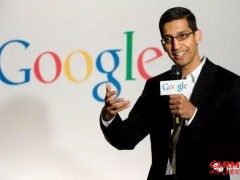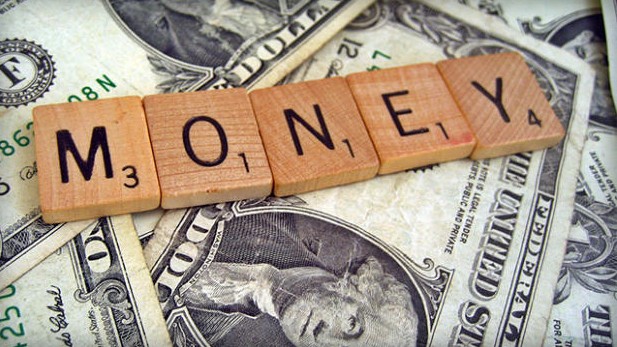如果一位CEO愿意接受1美元的年薪,此举释放了一个强烈的信号,表明这位CEO具有大局观念,愿意为了公司的利益做出牺牲。当然,这个CEO可能暗地里获得了一笔不菲的股票期权,但这些报酬取决于公司的成功。由此可见,1美元的年薪毕竟是个豪迈的姿态,意在昭示CEO们对公司前途充满信心。
然而,这也可能仅仅只是个烟幕弹。最近一项由吉尔伯托 洛雷罗(Gilberto Loureiro)、阿尼尔 马奎加(Anil K. Makhija)和张丹(Dan Zhang)三位教授进行的研究表明,多数情况下,1美元的年薪只不过是个公关策略而已。这份研究报告写道:“我们发现,有证据表明1美元的CEO年薪只不过是个策略,用来掩盖这些CEO的寻租行为。因此,根据我们的研究结果,实行所谓1美元的CEO年薪并非像表面看来那样是种牺牲,而是那些更富有、更自负、且具有影响力的CEO的机会主义行为。”
开创1美元年薪先河的是克莱斯勒的前任CEO李 艾科卡(Lee Iacocca)。上世纪70年代,克莱斯勒曾一度陷入危机,只得游说美国政府以寻求援助,为此艾科卡大幅削减了自己的薪水。后来其他CEO也纷纷效仿,其中就包括温迪快餐(Wendy's/Arby's Group)的尼尔森 佩尔兹(Nelson Peltz)、哥伦比亚广播公司(CBS)的萨默 雷石东(Sumner Redstone),以及苹果的史蒂夫 乔布斯、甲骨文的拉里 艾里森、思科的约翰 钱伯斯在内的一大批知名科技公司的高管们。
近年来,更多高管加入了1美元年薪的队伍,其中不乏谷歌的埃里克 施密特和全食超市(Whole Foods)的约翰 麦基等大牌CEO。金融危机期间,美国三大汽车厂商通用、克莱斯特和福特的CEO统统承诺自己只领1美元的薪水。花旗集团的CEO潘伟迪(Vikram Pandit)在2009年和2010年也只是各领了1美元的薪水(不过他的低薪生涯很短暂,花旗集团最近为潘伟迪开出了一份多年期的薪酬方案,总价值超过2,000万美元)。
这些克己奉公的CEO虽然损失了部分薪水,但却“失之工资,得之股权”,这已经不是什么秘密了。洛雷罗和该研究报告的其他两位主笔人研究了50位只领取1美元年薪的上市公司CEO在1992年到2005年间的总体薪酬水平,发现如果把基于股权的报酬也计算在内的话,那们他们挣的钱一点也不比其他CEO少。这些CEO的正常年俸的中间值大概在61万美元,虽然他们放弃了这笔钱,但却获得了价值超过200万美元的递增股权奖励。
股权报酬可能是一件好事。如果CEO们放弃了大量的工资或奖金,用来交换股权,那么他们就会把自己的财富和公司的成功联系在一起,这会促使他们尽力追求公司的增长。不过洛雷罗等人的研究指出,尽管1美元年薪的信徒们常常拿这种“一荣俱荣”的假设说事,但是实际情况并不支持这一假说。三位作者发现,这些给CEO减薪的公司将高管的表现与其业绩联系起来的必要性并不明显。这些公司也并没有因此赢得发展的良机,而且也没有历史记录表明他们曾用股票期权来奖励公司高层。
此外,“1美元CEO”们的人事变动频繁,进一步从根本上挑战了这一假说。一旦公司中止原有的薪酬方案,大幅削减薪酬,仅有48%的CEO接受了减薪,继续留任。而在1993年到2001年间,上市公司CEO的总体变动率仅为9%。
该研究的作者们认为,对于1美元年薪来说,更好的解释是“管理权力假说”。该假说假定CEO们之所以领取1美元的薪水,是为了追求自己的利益。他们写道,创立1美元年薪制度的企业,其公司治理往往较为薄弱。其中只有34%的此类企业有独立的薪酬委员会,而一般上市公司有67%都成立了薪酬委员会。在“1美元CEO年薪”的企业里,权力都集中在公司高层,他们的CEO平均拥有10%的公司股权(一般上市公司的CEO仅拥有3.2%的公司股权),外部机构拥有这些公司53%的股权(而在一般上市公司里,外部机构的占股比例为61%)。
该研究表明,只领1美元年薪的CEO比一般上市公司的CEO更阔绰,也更自信。这进一步证实了管理权力假说,因为有财有势的领导人更倾向于按照他们自己的议事日程行事。在只领取1美元年薪的CEO里,高达30%的人都登上了福布斯全美富豪400强排行榜,而在一般上市公司的CEO里,这个比例还不到5%。1美元年薪的CEO被新闻报道称为“乐观”和“自信”的几率也是一般上市公司CEO的两倍。
自信并不是人们关注1美元年薪CEO的唯一原因。该研究还发现,1美元年薪CEO经常需要面对一些棘手的问题,例如政府即将对他们的展开调查、企业表现不佳,或是一些个人困境等,这些问题使这群人更容易引发众怒。在50位接受1美元年薪的CEO中,有25位存在明显的公关危机。这也许只是个巧合,不过该研究报告的作者们却不这么认为:“这一点儿也不奇怪,这些人选择领取1美元的薪水就是为了掩盖他们的既得利益。”
如果你觉得这种观点过于尖刻,不妨再看看这个事实:一些企业在宣布1美元CEO年薪制后的头一年里,资产收入基本上和其他公司相当,但随后就开始恶化。而三年后,实行1美元CEO年薪制的公司在股市上的表现已经明显不如其他上市公司。
该报告的发现简直是毁灭性的——但从近期的另一份研究看来,现在还不是盖棺定论的时候。这份由索菲亚 汉姆、迈克尔 荣格和克莱尔 王共同执笔的研究报告对领取1美元年薪的CEO们进行了研究,结果发现这些人中存在着巨大的差异。
报告称,尽管总体薪酬更高的CEO的确有可能在以后的日子里表现不佳,不过那些接受较低薪水的CEO也有可能获得更高的股权收益和业绩。说到底,CEO是否领取1美元的薪水并不是关键,最重要的还是企业的财务状况。
译者:朴成奎
A CEO who accepts an annual salary of $1 sends a powerful message -- namely, that he or she is a team player who wants to make a sacrifice for the good of the company. True, the executive is probably receiving generous stock options on the side, but those payments depend on the corporation's success. The buck-a-year salary is a grand gesture, intended to broadcast the CEO's confidence in the future of the business.
It may also be a smokescreen. A recent study by Professors Gilberto Loureiro, Anil K. Makhija, and Dan Zhang says that, in many cases, $1 paydays are nothing more than public relations ploys: "We find evidence consistent with the view that $1 CEO salaries are a ruse hiding the rent-seeking pursuits of CEOs adopting these pay schemes," they wrote. "Thus, rather than being the sacrificial acts they are projected to be, our findings suggest that adoptions of $1 CEO salaries are opportunistic behavior of the wealthier, more overconfident, influential CEOs."
The $1 salary was pioneered by former Chrysler head Lee Iacocca, who slashed his pay in the late 1970s while the struggling car company lobbied the government for help. Other CEOs followed suit: Nelson Peltz of Wendy's/Arby's Group (WEN), Sumner Redstone of CBS (CBS), and a flurry of tech executives including Apple's (AAPL) Steve Jobs, Oracle's (ORCL) Larry Ellison, and Cisco's (CSCO) John Chambers.
The idea has gained even more traction in recent years, with corporate leaders like Google's (GOOG) Eric Schmidt and Whole Foods' (WFM) John Mackey embracing it. During the financial crisis, the CEOs of automakers GM (GM), Chrysler, and Ford (F) all pledged to pay themselves a dollar. So did Citigroup (C) chief Vikram Pandit, who received a single greenback in 2009 and 2010 (his asceticism was short-lived: the bank recently awarded Pandit with a multi-year pay package worth more than $20 million.
It's no secret that these self-abnegating chieftains often make up what they lose in salary by loading up on stock options. Loureiro and his co-authors looked at the total compensation for the fifty CEOs of publicly listed companies who made $1 or less between 1992 and 2005 and found that, when equity-based pay was included, they made just as much as their peers did. The $1 CEOs gave up a median of $610,000 in annual wages, but they gained more than $2 million in incremental options awards.
Stock compensation can be a good thing. When CEOs forgo a large salary or bonus in exchange for equity, they align their wealth with the company's success, which should motivate them to pursue growth. According to the study, this "alignment hypothesis" is the most frequently cited rationale for the $1 salary. But it isn't supported by the facts. The authors found that the companies that cut CEO pay didn't have a demonstrable need to align executive performance with results. They also didn't have significant growth opportunities or a history of rewarding leaders with options.
The alignment hypothesis is further undermined by the high rate of turnover amongst $1 CEOs. Once the salary plan was discontinued, only 48% of the CEOs who accepted the cut stayed in their positions. Between 1993 and 2001, total turnover amongst the CEOs of publicly traded companies was just 9%.
The study's authors argue that the stunt salary is better explained by the "managerial power hypothesis," which posits that $1 CEOs are pursuing their own interests. The businesses that instituted $1 salaries, they wrote, had weaker corporate governance. Only 34% had independent compensation committees, compared to an average of 67%. Power at the $1 companies was concentrated at the top; their CEOs had an average ownership stake of 10% (vs. their peers' 3.2%). Outside institutions owned just 53% of the companies (vs. 61%).
One dollar CEOs are wealthy and confident, even more so than the average executive. This further corroborates the managerial power hypothesis, the study says, because rich and brash leaders are more likely to pursue their own agendas. A whopping 30% of $1 CEOs were on the Forbes 400 list of the richest Americans, compared to an average of less than 5% among CEOs in general. They were twice as likely to be described in news reports as "optimistic" or "confident."
Confidence alone isn't cause for concern. But the study also found that $1 CEOs frequently had issues that made them vulnerable to public outrage, like pending government inquiries, corporate underperformance, and personal dilemmas. Of the 50 CEOs who accepted a $1 salary, 25 had explicit public relations risks. That could be a coincidence -- but the authors doubt it: "It is not surprising that this group has chosen to adopt $1 salaries as camouflage for their benefits."
If that seems cynical, consider this: In the first year after companies announced $1 CEO salaries, they achieved returns on assets that were comparable to their peers; after that, their returns deteriorated. One-dollar companies significantly underperformed their peers in the stock market after three years.
The authors' findings are damning -- but they may not be completely conclusive, according to another recent study. This one, authored by Sophia J.W. Hamm, Michael J. Jung, and Clare Wang, looked at the different CEOs taking $1 salaries and found vast disparities within the group.
While the executives who received higher total paydays were likely to underperform going forward, they wrote, those who actually did receive lower pay packages were likely to achieve improved stock returns and performance. In the end, the $1 salary was irrelevant; what mattered was the bottom line.
 手机版|
手机版|

 二维码|
二维码|






